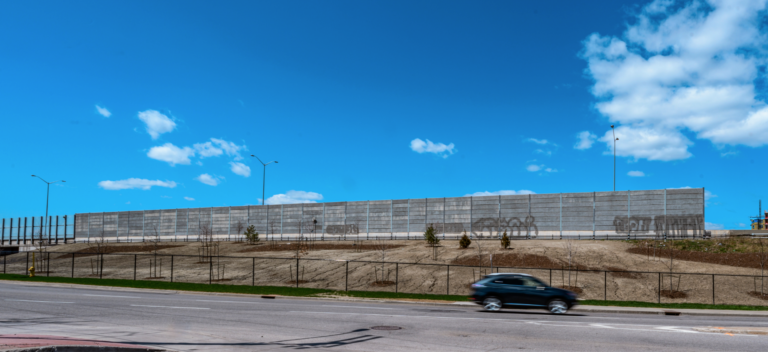Infrastructure should be more than functional. It should be beautiful.

When we build physical infrastructure, we expect that it is going to last for decades, even generations. With the federal government poised to invest billions of dollars in transit, bridges, roads and cycling networks, it is more important than ever that we get it right.
That means more than just making it functional. The three classic ideals of architecture apply here too: It must function, it must be durable and it must be beautiful.
We sometimes seem to forget about that last part.
So much of our built environment is boring, if not downright ugly. Consider the humble retaining wall. Its modular format makes for speedy construction – but vast expanses of identical precast hexagonal units make for a boring view. And when the same wall system is used across a city, and across a province, it creates an unintentional, nondescript sense of identity.
Highway sound barriers are shades of grey, set in galvanized steel frames. They serve a critical function when you are driving past at 100 kilometres an hour but when you are seeing the backside of those panels on city streets, your slower speed – whether driving, walking or cycling – demands that you have something more interesting to look at.
Graffiti is quickly painted over, leaving a splotchy canvas just waiting for the next artist to clamber over a chain link fence in the dark of night in a never-ending war of attrition.
Recently, Christopher Griffin, a well-respected Ottawa artist, created a herd of rhinoceroses on the abutment walls of an overpass. Within days, the Ministry of Transportation arrived and painted over them, leaving behind the grey shadows of what was once whimsical art that enlivened the experience for passersby. Echoing the demise of real rhinos, the shadowed remnants leave us a little bit sadder.
We can do better.
Many cities have programs in place to encourage murals on private and public property. The process can be bureaucratic, however, requiring community approval, permits and so on. That sort of extensive process undermines the spontaneity of artists such as Mr. Griffin, who uses existing vandalism tags, cracks in walls and other features to create playful images that enhance the public realm.
Beyond adding art to our infrastructure, we need to rethink how we go about building in that beauty right from the beginning.
In 2015, the Ontario Government gave Royal Ascent to Bill 5, the Infrastructure for Jobs and Prosperity Act. One of its purposes was to see design excellence incorporated into infrastructure planning.
The act requires that architects be involved in the design and planning of highways and bridges – places where they are traditionally excluded. The idea is to bring the values of beauty and holistic planning that is intrinsic to the training of architects to a field that has been traditionally the realm of the efficient and practical engineers. Since being passed, the act remains in limbo and is not being enforced.
While we plan to spend billions, we ignore the existing opportunities to do better than the same old.
Consider the Prince Edward Viaduct (aka the Bloor Viaduct). Designed by Edmund Burke, an architect, it opened in 1918 and included space for eventual mass transit, decades before subway lines arrived in 1966, saving millions of dollars for future generations.
Water treatment plants, such as the R.C. Harris plant in Toronto and the Lemieux Island plant in Ottawa, are acclaimed historic works of architecture that have provided valuable public infrastructure to communities for generations. New and replacement infrastructure should be as beautiful, and as functional.
All too often, our physical infrastructure is designed to function for the short term. Sidewalks fail, roads are quickly potholed and poorly detailed concrete cracks, breaks and becomes an eyesore. When well-designed infrastructure becomes a place for beauty and quality, it enhances our built environment and creates a canvas for art and creative expression.
We can leave a better legacy for future generations by ensuring that what we build today remembers the people who will be paying for it. We need to combine the political will to enforce existing legislating with a public demand for more beautiful places, and think smarter about how we plan, design and build the infrastructure we need in our communities.
Photo credits:
First and third photo by Miv Photography.
Second photo by Christopher Griffin and Robyn Paton.
This article was also published in The Globe and Mail.
Toon Dreessen is president of Ottawa-based Architects DCA and past-president of the Ontario Association of Architects. For a sample of our projects, check out our portfolio here. Follow us @ArchitectsDCA on Twitter, Facebook, LinkedIn and Instagram.